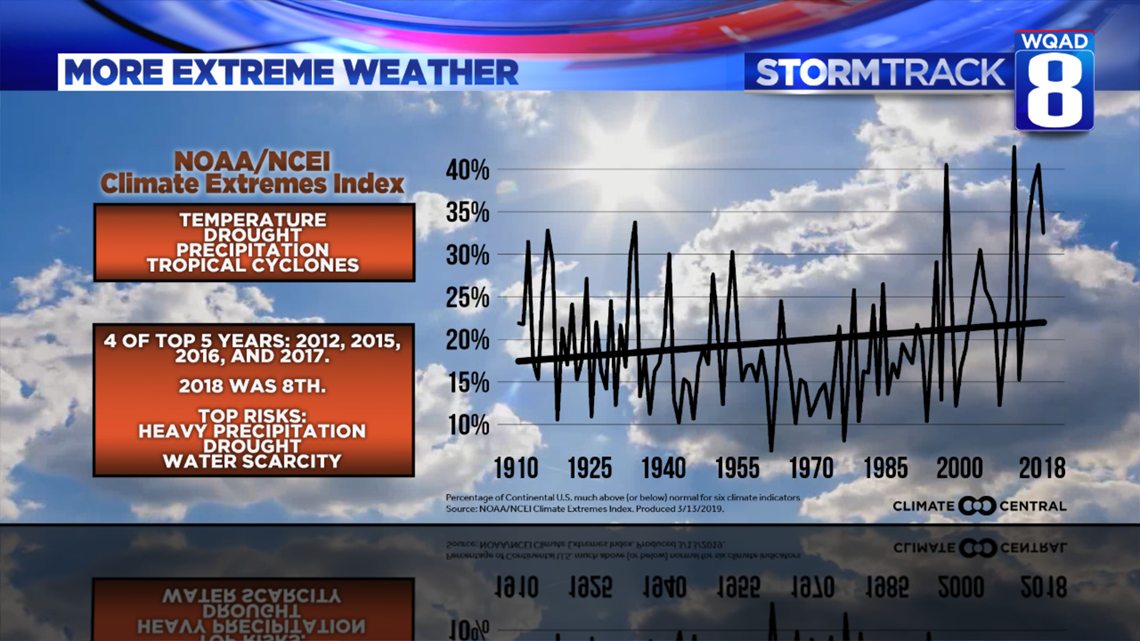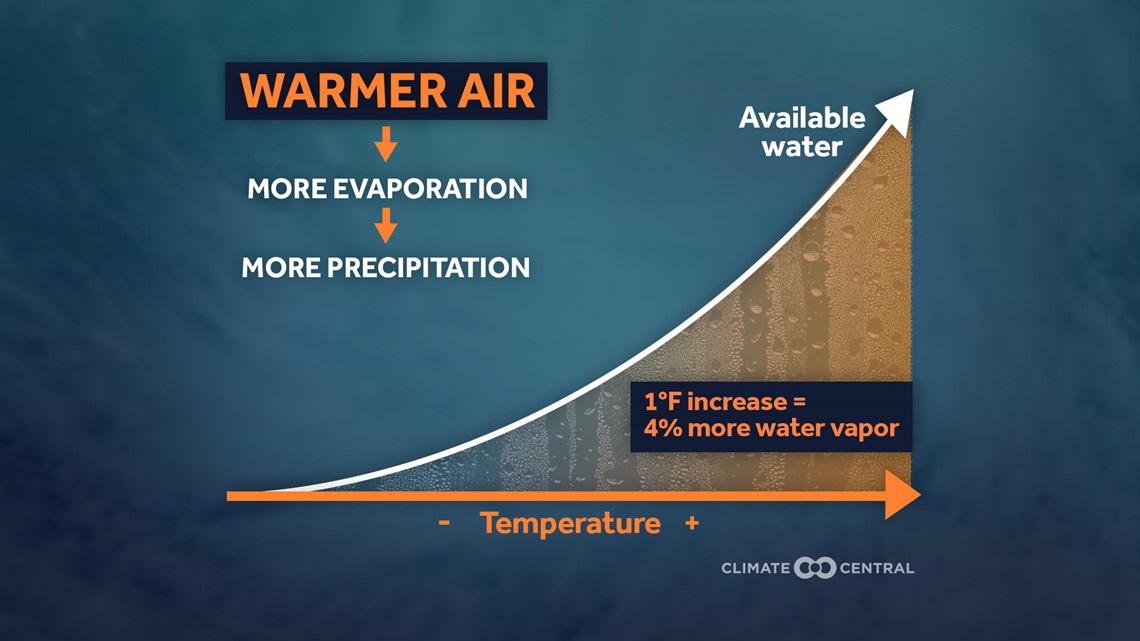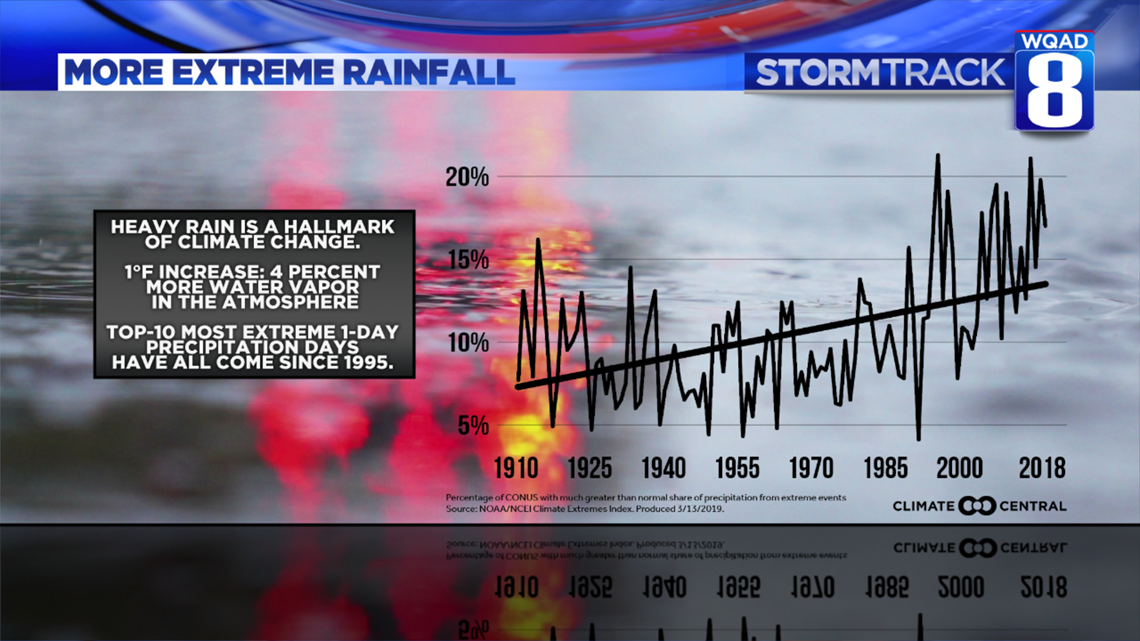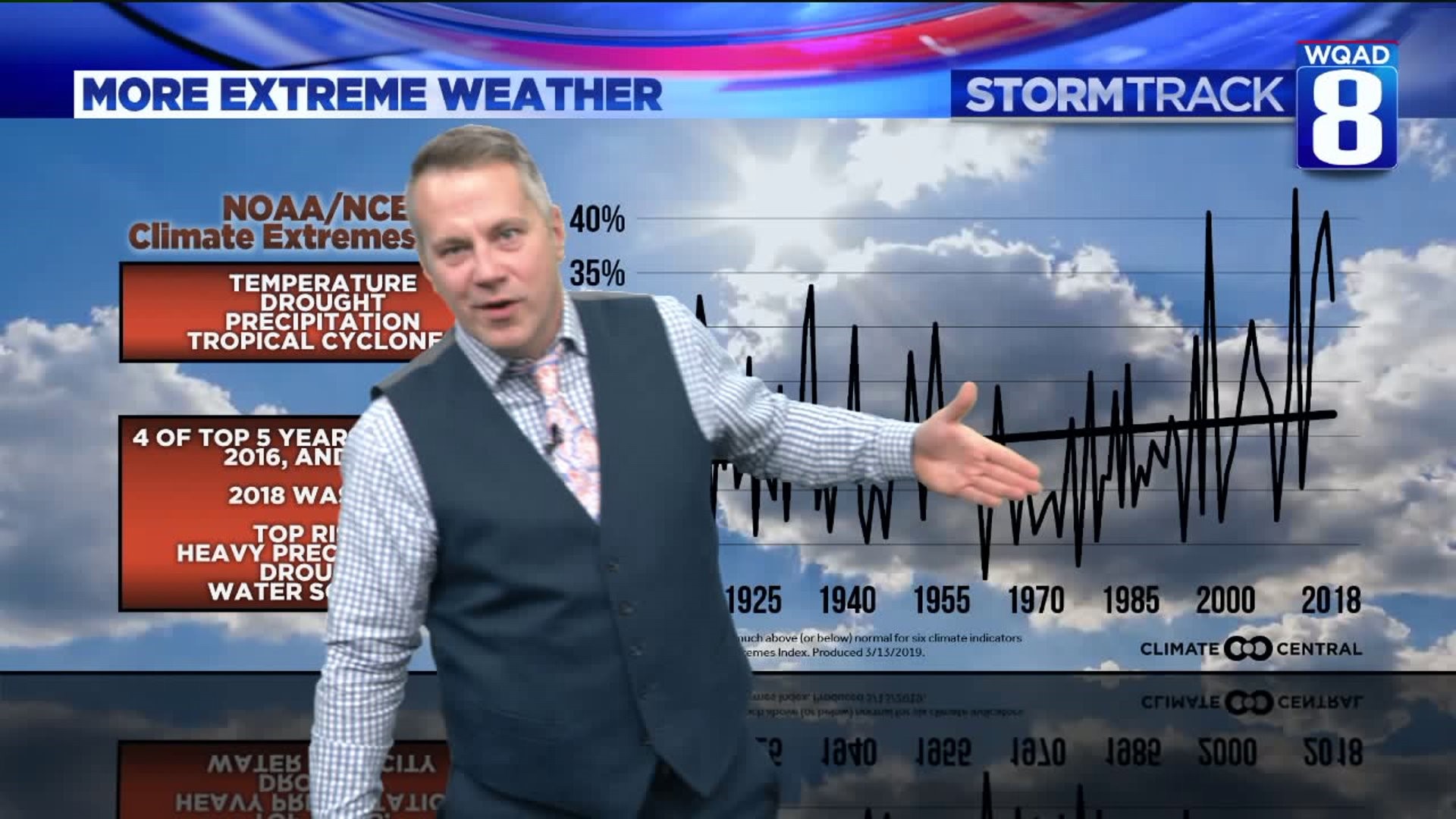As the climate of the Earth continues to warm, more energy is available for big storms.


That heat energy can fuel bigger storms more often. From record snowfall in Eau Claire, Wisconsin and Flagstaff, Arizona, mudslides in Tennessee and North Carolina, and surging floods in California, we are getting bigger events to happen more frequently. The NOAA/NCEI Climate Extremes Index evaluates the percentage of the contiguous U.S. that is much above (or below) normal for six indicators related to temperature, drought, precipitation, and tropical cyclones (includes full range of organized tropical systems). Even though the data goes back to 1910, four of the top five values occurred in 2012, 2015, 2016, and 2017.
Last year was 8th on the list.
Winter 2018/2019 was also the wettest winter on record for the contiguous United States.


Heavy precipitation events are a hallmark of a warming climate. A 1°F increase leads to 4 percent more water vapor in the atmosphere, strengthening downpours.
Even though some outspoken people get loud when we talk about it, #climatechange is as important as ever. If your favorite weather team isn't covering it, you really should ask yourself why. #science @ClimateCentral pic.twitter.com/rq9PRfZh3p
— EricSorensen (@ERICSORENSEN) March 14, 2019
We are even noticing it in the way our weather models are handling rain and snow events. It's been my observation that more than half of the systems we've tracked this Winter season have produced more precipitation than the average of our computer guidance. This makes sense because this new climate science is not yet being ingested into the mathematical applications of the models.


As we head into the "rainy season," which is May, June, and July, we better hope that our flooding rivers are back to normal. Heavy rainfall and flash flood trends are all up. And this is part of the broader increase in extreme events.
According to NOAA/NCEI Climate Extremes Index, the ten years with the most extreme 1-day precipitation have all happened since 1995.
-Meteorologist Eric Sorensen

